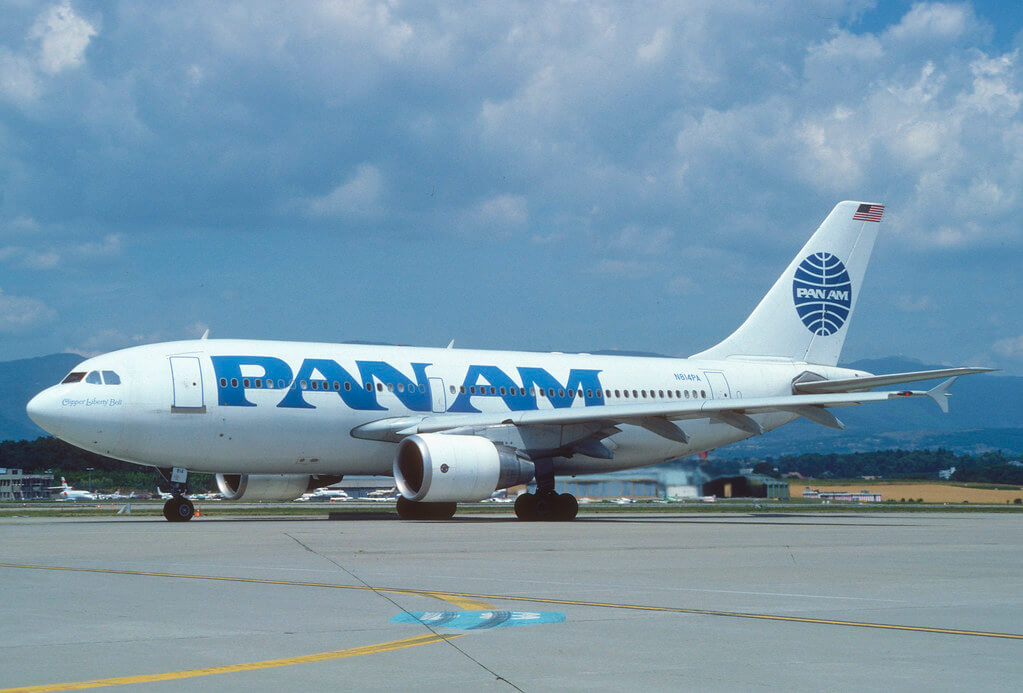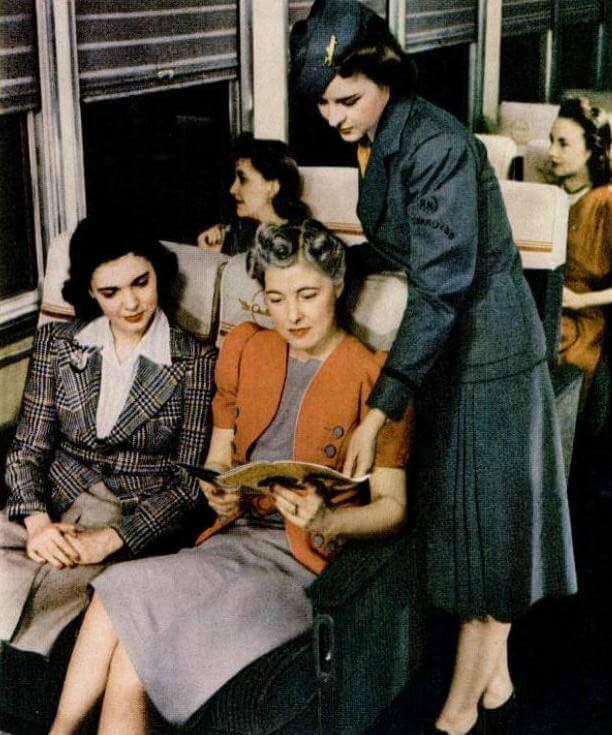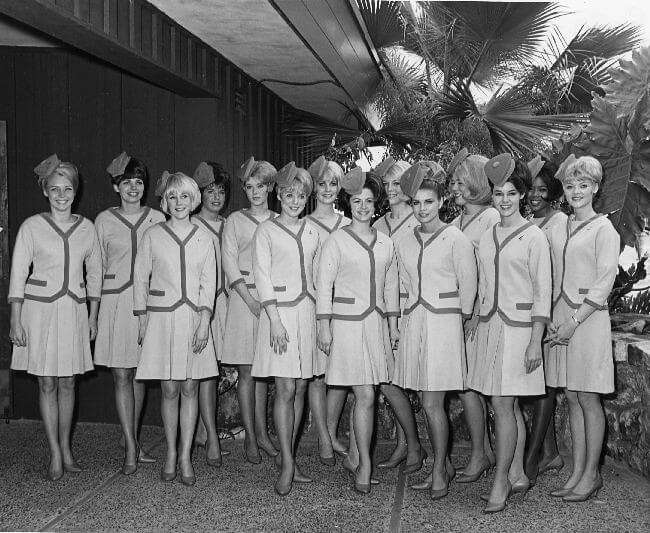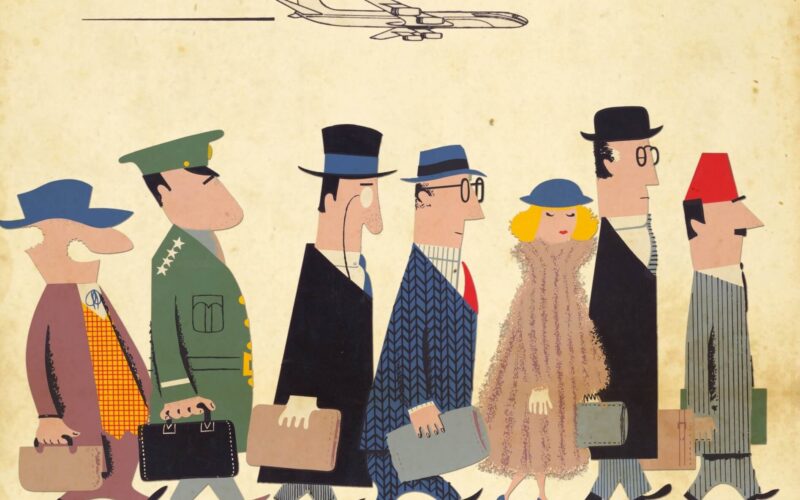The Golden Age of Flying is often associated with the famous Pan Am and the Concorde aircraft flights in the 1950s and 1960s. The first commercial jet clipper capable of economical transatlantic service, Boeing 707, purchased by Pan Am, inaugurated the era of jet flights. It was a lavish colorful era without long security lines and every comfort and requirement was catered to a passenger. It put a beginning to the glorious age of aviation.
Technical features of the transatlantic carriers
Back then, the passengers flying from New York could reach Europe in less than 6 and ½ hours. The transatlantic jets were used not only for traveling but also for the mail and cargo shipment. A letter posted in London or Paris after the close of business might arrive in New York the same night.

The planes were taking slowly and smoothly without any need for engine warm-up, without outside noise, now reduced to nothing compared to propeller-driven planes. Boeing 707 was capable of traveling 575 miles per hour or more. The next model of transatlantic jet, Boeing 747, had a range of more than 5000 miles and cruised at 625 miles an hour. Because of its size and speed, the transatlantic jet could do the job of several of the biggest propeller-driven planes of that time. The huge engines were making less noise than smaller aircraft.
Outstanding service and unforgettable experience
In some arrangements of seats, more than 150 passengers could be accommodated on the Boeing 707. There was an entrance in the back and in the front with the plane servicing facilities on the far side.
The passengers’ cabin was spacious, 25 feet wide and 186 long. It was attractively decorated, air-conditioned and draft-free. The interior was equipped with newly designed individual overhead light units. Roominess extended even to the powder rooms, which replicated those people had in their private houses.
There was an atmosphere of glamour and comfort. In the 1950s, passengers had a bed made up for them at night on some flights. There could be framed pictures on the walls and lobsters for lunch. Delicious food was prepared in four, later six simultaneously operating galleys where dishes could be cooked in five-minute ovens.
The equipment let to streamline the process of feeding up to 490 passengers. There were fourteen stewardesses on the Boeing 747 to attend to the needs of the flying masses. In the economy cabin, seating was nine abreast, providing two aisles for freedom of movement and lots of legroom.

The mood was enhanced by lighting, which could be changed from the pale pink of dawn through all the variations to dark blue at night. Luxury coupled with a fair economy became a key feature of the flights in the golden age of aviation.
There were endless free drinks in the cocktail bar. Smokers might have enjoyed the air trip in the early 1960s. On most of the commercial planes, it was allowed to smoke. As a result, every luxurious aircraft trip was followed by cigars, cigarettes, and pipes smoke in the 1960s.
Back in the Golden Age of aviation, everyone wore their finest clothes to travel. The aircraft stewardesses, with body-sculpted uniforms, white gloves, and hats, looked like movie stars. The selection process for flight attendants was more than serious. The airhostesses were selected for their looks. There were also regulations on their weight.

Another plus of traveling during the Golden Age of Flying was that security simply did not exist. Moreover, the passengers were guaranteed to make their flight even if they showed up just 30 minutes beforehand.
High ticket prices and more accidents in the air
In the early 1950s, flying on Boeing or Concorde was a quite expensive pleasure. In the 1950s and 1960s, a return flight from New York to London could cost five times as much as it does today. There was no economy class, economy plus, business class, and first-class. Initially, there was only one class – and it was luxurious. At the end of the 1950s, airlines started introducing economy class for tourists.
There was another disadvantage of traveling by air in those days. According to Guillaume de Syon, a professor at Pennsylvania’s Albright College and an expert on aviation history, there were a lot more plane crashes and flight accidents in the Golden Age of Flying. In 1952, the number of fatalities in flight accidents was 5.2 deaths per 100,000 hours. It is almost five times higher than nowadays. The main reason for the accidents was not enough advanced flying technology and plane interiors that were not designed with safety in mind.
According to de Syon, due to high air turbulence, even walking to the bathroom in a 1950s-era aircraft could be fatal.
The 1950s brought a massive introduction of comfortable multi-seat aircraft and new generation equipment, which made flights shorter in time and reduced airfare. Longer trips became more popular. Residents of northern industrial cities started to travel regularly to the southern warm regions. Air travel was something fascinating and exciting, and people were admiring looking into the rounded windows while flying above the clouds. Despite a couple of negative factors, some people would choose to fly during the Golden Age of Flying from New York to London. Anyway, it took just 6 and 1/2 hours.

